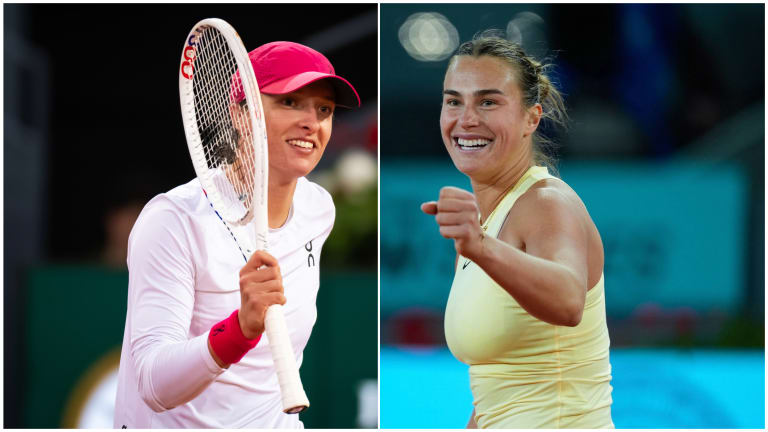In the Madrid final in early May, Iga Swiatek and Aryna Sabalenka played one of the best matches of 2024. It was a see-saw slugfest that went on for three hours. Sabalenka had three championship points, but Swiatek emerged the winner, 9-7 in a final-set tiebreaker.
Afterward, I asked the question, “Has their rivalry finally achieved lift-off?” At that point, the 23-year-old Pole and the 26-year-old Belarusian had co-dominated the tour for nearly three years. Swiatek had won four majors, Sabalenka two. They’d played several competitive matches against each other at important tournaments. They’d spent most of that time ranked No. 1 and 2. Maybe most important, each played an ultra-athletic, no-holds-barred brand of modern power-baseline tennis.
But something was missing—and still is.
The summer of Swialenka, or Sabatek, failed to materialize.
The biggest missing element was a Grand Slam final: They had never met in one, and they still haven’t. In fact, only one of their 12 encounters, Swiatek’s three-set win in the 2022 US Open semis, has come at a major. It also hasn’t helped that they’ve tended to play their best at different times, and on difference surfaces. When one of them is in form, the other is slumping or injured. General sports fans know who each of them is, but you rarely hear their names said together, in the same breath, the way you do with all great tennis rivalries. Even newcomers Carlos Alcaraz and Jannik Sinner are better known as a pair than Swiatek and Sabalenka.
The Madrid final seemed, finally, to promise something more. With potential clashes in Rome and Paris coming up right away, and Wimbledon, the Olympics and the US Open following in rapid succession over the summer, there were plenty of major stages where Swiatek and Sabalenka might meet. How long could the WTA be ruled by two players who never had a chance to settle things on the court?
Fast forward to today and, unfortunately, we’re still asking the same question. The summer of Swialenka, or Sabatek, failed to materialize. They did play each other twice, but both were one-sided duds: Swiatek won 6-2, 6-3 in Rome, Sabalenka won 6-3, 6-3 in Cincinnati. The latter wasn’t even a final. Otherwise, each vanished as the other popped up again.



